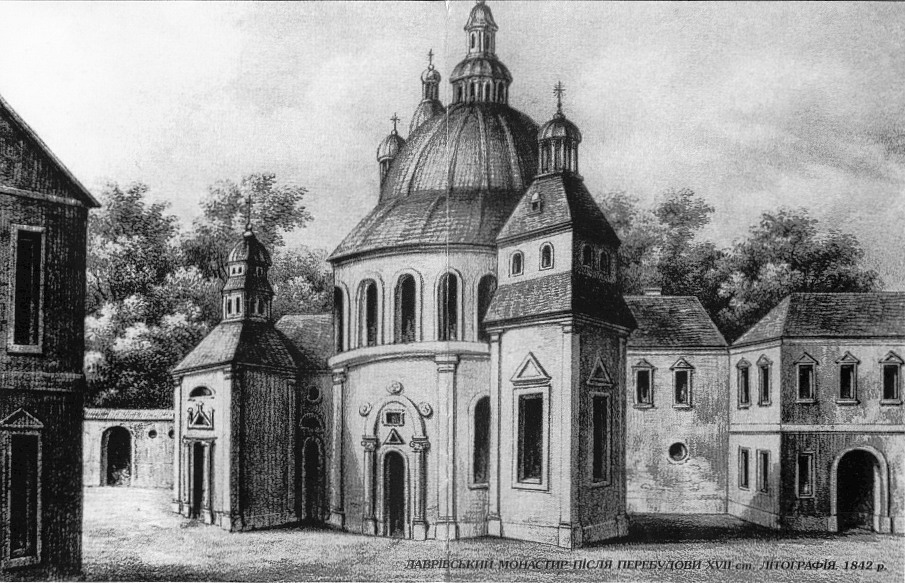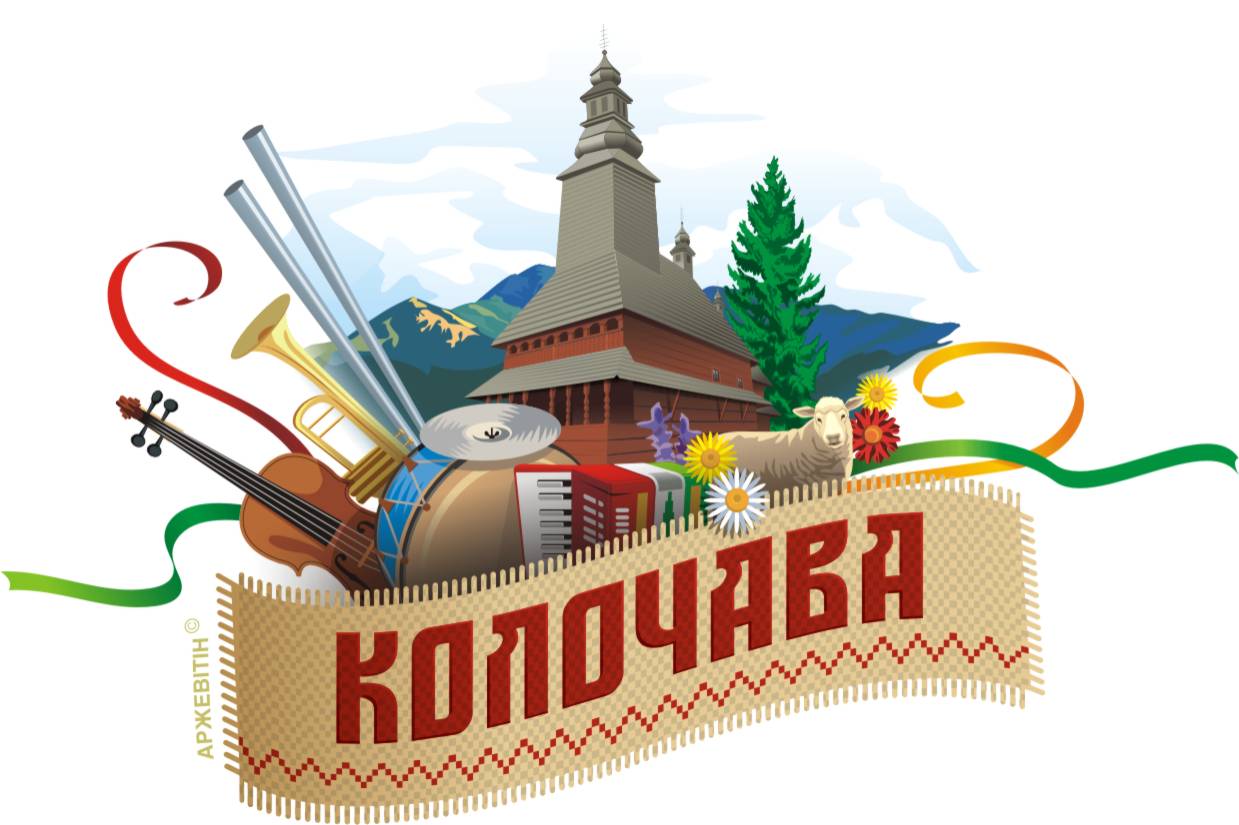The small Carpathian village of Lavriv, located 12 kilometres from Staryi Sambir and 9 kilometres from the nearest train station, has long been one of the places of importance throughout the Christian world. Hundreds of years ago, the Saint Onuphrius Monastery in Lavriv attracted pilgrims of different social background and financial status, and became for them the last bastion. It was also a centre from which the cult of the saint spread in the countries of Eastern Europe.
Historians still have divided opinions today about what was on this blessed land before the appearance of the first monks, the follower of St. Onuphrius, a 4th century Persian prince, who for 60 years atone for the sins of humanity in the hot African desert. It is even suggested that it is here, where the first Ruthenian Christians from the time of Vladimir the Great settled in the bunkers, the cells made by themselves. But let us leave the secrets of the past to archaeologists and historians and start the story from a little “closer” times, that is, the thirteenth century.
History of the founding of the monastery
We will not list all versions of the founding of the monastery and focus on the views of historian Ihor Myćk as the best known and accepted in the scientific community. Thus, more or less in the middle of the 13th century, the Duke of Lithuania, Vaiselga – uncle and the godfather of the ruler Lev Danilovich from Halych region – entered the monastery under the name of Laura. He took his vows in the Transfiguration of Jesus Monastery in Spas, which was located a few kilometres from today’s Lavriv. In 1254, the pious Vaiselga Laur went on a pilgrimage to Mount Athos, but he only managed to reach Bulgaria. There, inspired by the three-conches orthodox churches, after returning from the Balkans to his family, the prince decided to build such an Orthodox church. “Kohcha”, among other things, means “shell” in Greek, and in religious architecture it is a hemisphere covering the cylindrical parts of the building. Such temples were common in ancient Rome and during the turn of the Middle Ages and Renaissance. Now it is difficult to say whether Vaiselga Laur saw the implementation of his idea. In 1267 in Włodzimierz, during the heritage argument, Prince Lev committed a grave sin – he killed Vaiselga. It seems that Lev Danilovich was going through a serious crime because he later joined the monastery and spent the rest of his life in the Transfiguration Monastery in Spas. However, Lev was buried as a follower of the cult of St. Onuphrius, in the St. Onuphrius monastery in Lavriv, founded by his uncle who was murdered by him. Moreover, he was buried next to his victim. This version is not historically proven due to the impossibility of unequivocally identifying burials within the monastery, but researchers have so often assumed its feasibility that it has in fact become a reality.

The cult of Saint Onuphrius
Not being a religious expert, it is difficult to understand why the cult of St. Onuphrius actually gained such popularity in the lands of the Boyko area. But the fact is that the Lavrov Monastery was one of the four places where the relics of the saint are kept in Europe and the only one in the eastern part of Europe. Other parts of relics have been kept in Konstantynopol, Rome and Brunswick. It is suggested that it was from this German town that the relics were brought to Lavriv, because the princes from Halych region, as they say, regularly maintained contact with the local rulers. It is thanks to the relics of St.Onuphrius, the monastery has gained the greatest glory. And probably that was the cause why the Orthodox nobility and rulers as well as the St. Onuphrius followers wanted to be buried in Lavriv, rather than in Cathedral templates. In addition to Prince Lev, the following metropolitan of Kiev have been buried here: Antoni (Orthodox) and Yuri (Uniate), Greek Catholic bishops Innocenty Winnicki and Hieronim Ustrzycki from Przemyśl, Wallachian hosts Stefan Petriceicu and Konstantyn Șerban, Jerusalem Patriarch Makary Ligarides and many others.As for the relics of Saint Onuphrius, they were lost during the Tartar invasion in 1549. It is likely that the invaders were simply interested in the richly encrusted reliquary in which they were kept. But there are holy places for miracles to happen in them. On 25 June 2011, almost 500 years after the destruction, thanks to the efforts of the priest of the monastery in Lavriv Father Mikołaj Kowalszyn and through the reign of Irynej Biłyk the parts of St.Onuphrius relics have been taken to the monastery in Lavriv.
Miracle of saving
We have already mentioned many times about the Transfiguration of Jesus Monastery in Spas, located in the neighbouring of the monastery in Lavriv. It was not a coincidence. This monastery was comparable in importance to the Lavriv monastery. Anyway, it was in Spas that the Lev led the religious life, and there he died. According to the decree of the Habsburg Empire Joseph II, only 9 monasteries could have remained in Galicia, while the remaining religious congregations were subject to cassation. In 1786, the monastery in Spas was liquidated, and all its property was transferred to Lavriv. First, an administrative institution was located in Spas, and soon the monastery was finally demolished. The recovered building material was intended for the erection of state administration buildings. And despite the fact that there is no trace left in the Spas, which would be an evidence of its former spiritual power, walking from Lavriv, it is also worth visiting here to admire the beautiful Carpathian landscapes and relax on the picturesque bank of the Dniester. In the neighbourhood, a traveller will please the eye with a waterfall and the popular stone from Spas, which, according to legend, could not be brought to the target by the devil and wanted to drop the rock on the monastery in Lavriv.

According to the decree of the Emperor Joseph II, the monastery in Lavriv was also to meet the fate of his neighbour. However, to save this holy place, the then hegumen Starożyński suggested to transform it into a hospital for Basilian monks. The emperor did not mind this concept, but the authorities of the Lviv Governorate rejected this idea. The liquidation committee had already arrived in Lavriv, when the hegumen, the district governor of Sambor (nowadays it is Staryi Sambor) just had a saving plan, which worked this time. A model of German school was allowed to be established in Lavriv, which survived in this place until 1911. The existence of the Lavriv monastery was threatened many times, but the force majeure has always helped to save it. And so in 1767, before the emperor’s order, a fire broke out in the monastery. The historian Denis Zubrytsky in 1845 wrote that all the wooden buildings of the monastery in Lavriv were burnt down at that time. Only the stone chapel has been preserved, in the wall of which the coffins of princes have been found (it is believed that they were Lev and Lavra). The then hegumen Wolański, having invited priests from neighbouring monasteries, ordered the grave to be opened. The coffins were covered with thick silver sheet and decorated with a sophisticated sculpture, the name of the Lev was embossed on one of them. In order to prevent the found treasure to be highjacked, the silver was secretly melted and sold, and the recovered money was used to rebuild the burnt monastery. However, most researchers are convinced that this story is a legend. Historians note that since the prince Lev died being a monk, he was buried like an ordinary mortal, probably in a wooden coffin, not made of silver sheet. Undoubtedly, the monastery experienced difficult times during the Soviet occupation. In 1939, the NKVD guards taken the archives and libraries of Lavriv to the nearby village of Strzyłki and they burned them. Local peasants managed to save literally several icons, which eventually came to museums. In June 1941, the monastery served as barracks for the Soviet garrison. Then Soviet soldiers destroyed most of the utility rooms and drained water from the ponds.
After World War II, a boarding school for disabled children was created in the monastery rooms, which survived until 1994. The St. Onuphrius Orthodox churchat that time served as a warehouse, while coal was stored in the belfry, which experienced medieval battles with invaders. And in other monastery rooms there was a school, library and country-style club.
The church was handed over to the believers in 1990, before the formal collapse of the Soviet Union, and in 1994 the monastery was renovated, and at present Basilian monks care of it. It is natural that invasions, fires and the passing time forced them to renew or even rebuild the monastery complex each time in case of such disaster. In fact, it was raised in 1770-1788 by the architects Oberländer and Schneider.

Major works were carried out on it as early as the beginning of the 20th century, as a result of which a new monastery building was erected, which survived during World War I. However, the most important works and related discoveries were carried out directly in St. Onuphrius template. In 1911, under the supervision of the architect priest Kazimierz Mrozowski, the Orthodox church was renovated. During these works, the well-known Ukrainian painter Modest Sosenko has discovered older and much more valuable paintings made with tempera under the oil ones, not so vulnerable in terms of art and made in 1872 by Martyn Jabłóński. The paintings present scenes from the life of Jesus Christ. Later, after research, they were dated to the end of the 15th and the beginning of the 16th century. The technique and the Ruthenian-Byzantine style of the paintings are very similar to the paintings of the Świętokrzyska Chapel, also called the Jagiellonian Chapel of the Wawel Cathedral. Experts consider Lavriv tempera paintings as an extremely valuable souvenir in the areas of the former Polish-Lithuanian Commonwealth and Austria-Hungary, and one of two (together with paintings of the church of St. Nicholas in Lviv) that have survived in Ukraine. In addition to the unique polychromies, fragments of the iconostasis, made in 1570 by the then-known sculptor A. Biernikowicz. The first thing that makes an impression when you get to Lavriv is the amazing silence that evokes inner peace. There are no hundreds or thousands of pilgrims here, perhaps because it is harder to get here than to other monasteries. Ancient walls that witness extraordinary historical events are the keepers of great mysteries. The monument is organically blended into the forest and tree groves that surround the entire monastery complex. Next to it, we can find a well with extremely tasty and always cold water. On Iwanowa Góra, rising above the monastery, in the place where once stood the church of John the Baptist, now there is an old cemetery. In olden times there were defensive redoubts protecting monks from this attack from invaders. Today, however, an idyllic view of the Lavriv monastery presents – a fascinating symbol of the history and sanctity of our country.

















